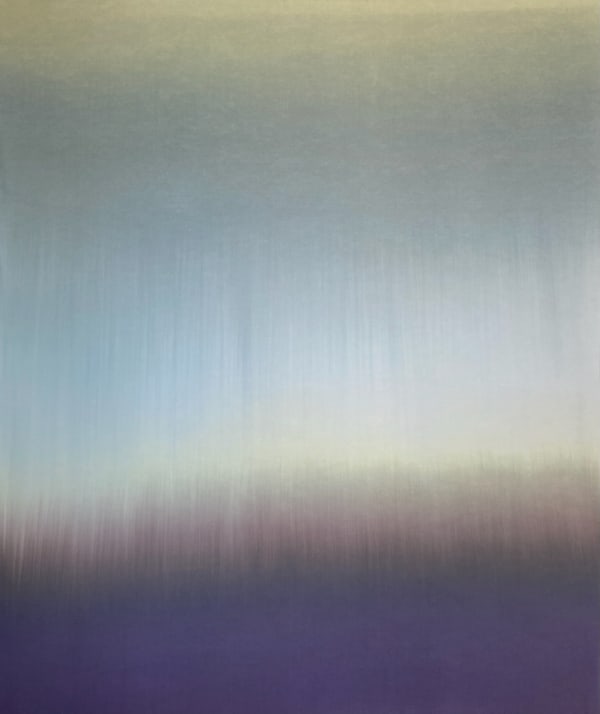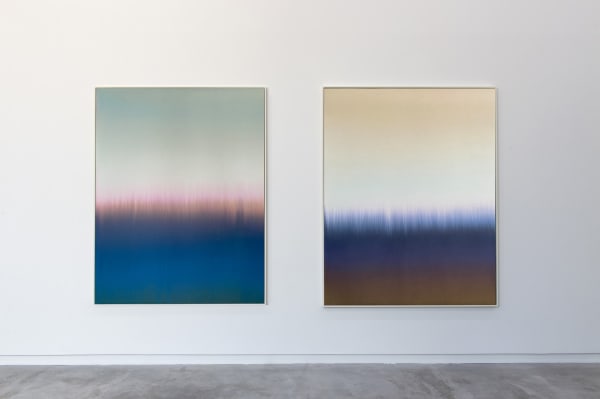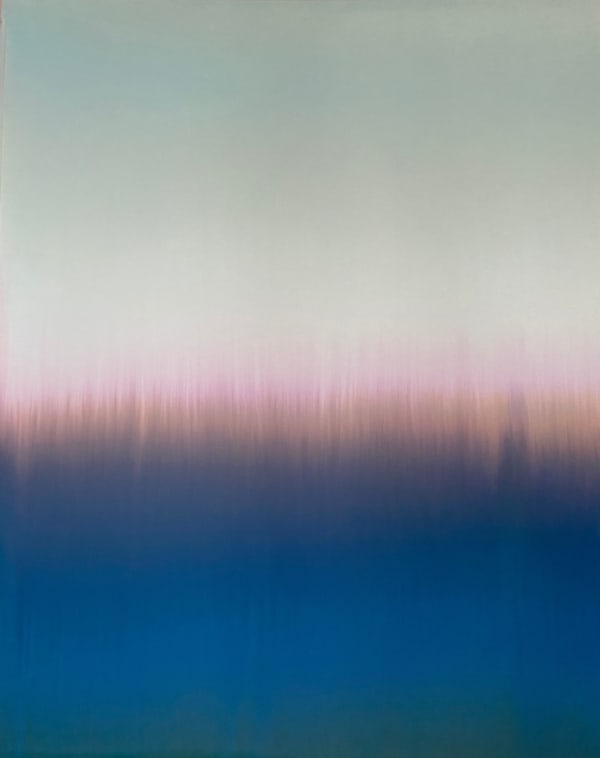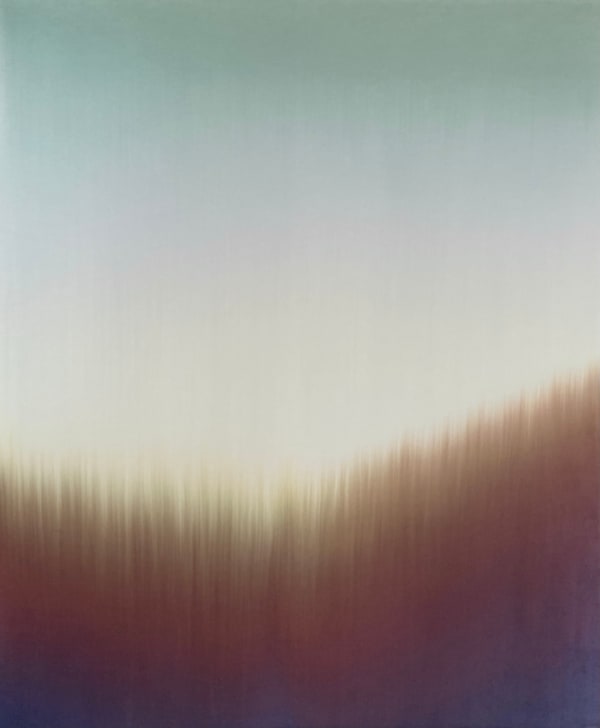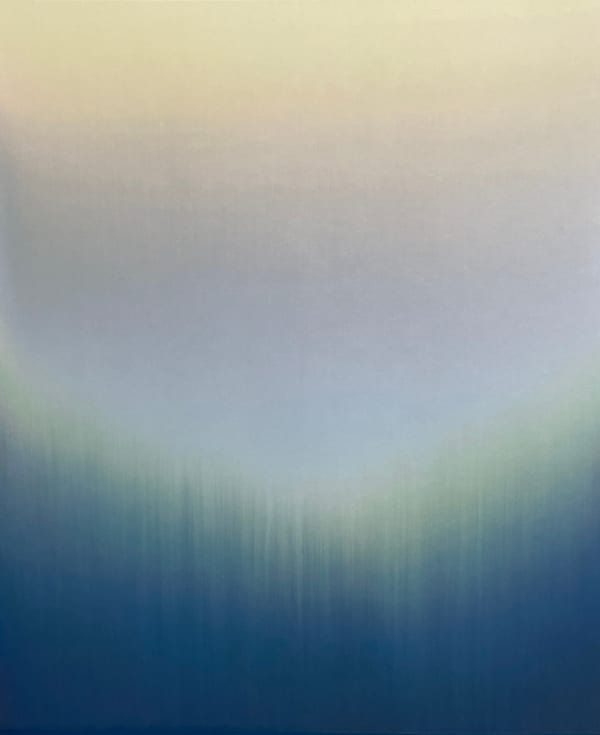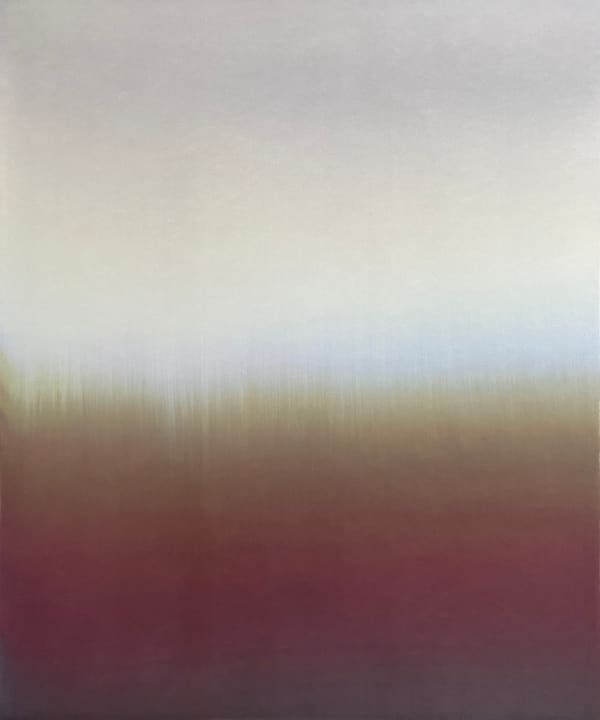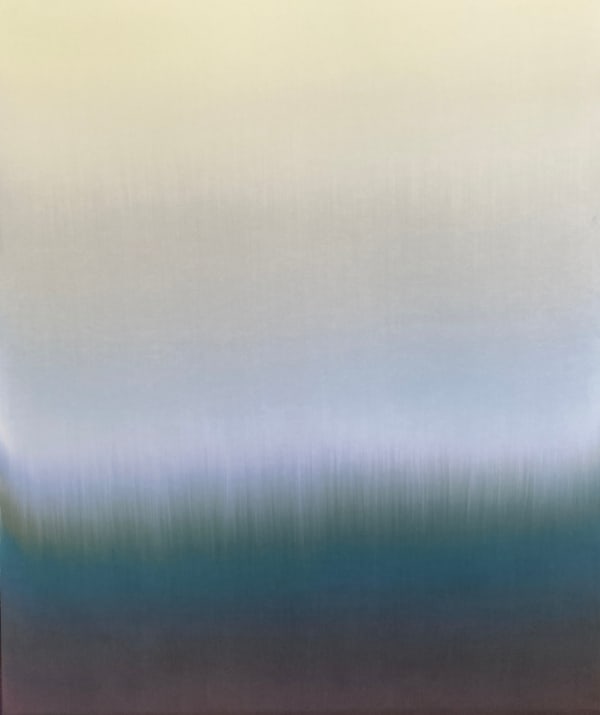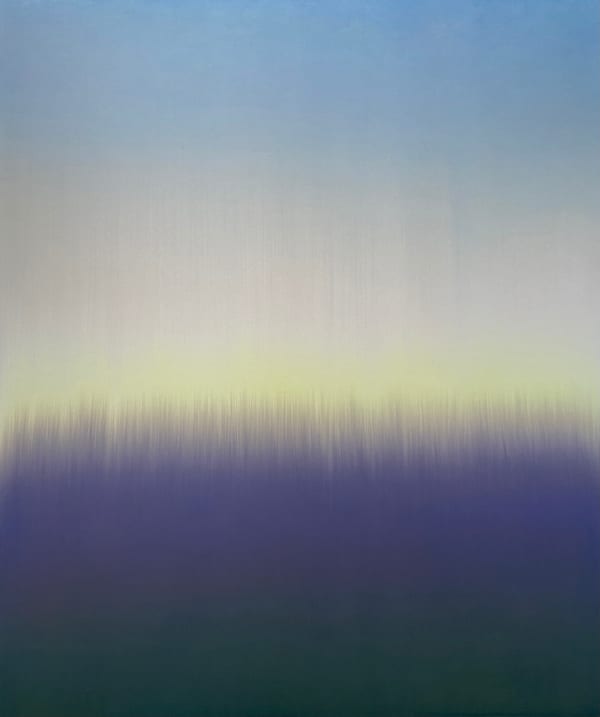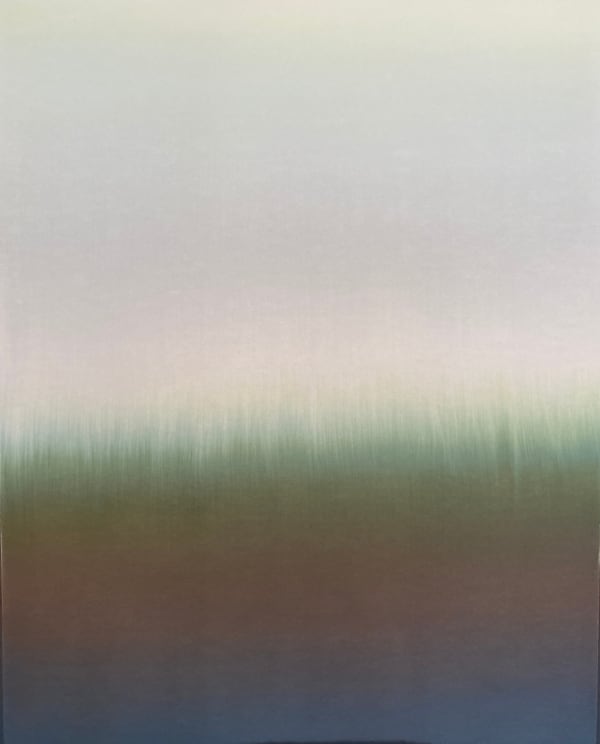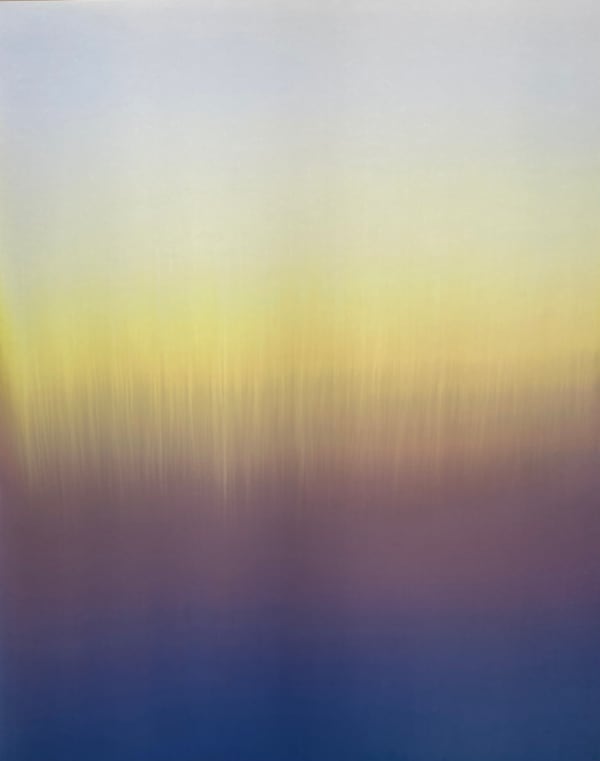Works
Biography
Claire Chesnier first encountered art through music and writing, which she practiced very early on. She devoted almost twenty years to classical and contemporary dance. Painting, which she has been practicing since the beginning, is the decisive encounter between the writing gesture and the embodiment of an extended dance gesture. Her commitment to painting is focused on a physical and poetic relationship with the world, an apprehension of touch, and the sensitive intertwining of things and life. Her paintings are dawnings of abstraction, luminous apertures onto the unfolding of hazy spectrums. They have an upwards atmospheric thrust in their overt abstraction, in their pigment density and liquid materiality. Their verticality displays bodily proportions and paradoxically veers towards the horizontality of a tremolo, streaking the paintings with striations of chromatic gradients. Two axes are superimposed – body axis and landscape axis – making it impossible to reconstruct the painting’s phases. Her painting also responds to a need for luxation, for separation and dislocation of the world, referring to reality by way of pure analogy, commodity or pretext. This analogy matters, as painting – however abstract it may be (yet isn’t that its essence?) – must be able to trigger a reversal and form a polarizing filter on the world: having called the world as witness, it deflects towards a common assent about reality. Such is the outcome of William Turner’s blazing sea-skies, Giorgio Morandi’s tenaciously painted still-lifes, Gilles Aillaud’s zoos and animals, Raoul de Keyser’s sports fields and weak landscapes, Etel Adnan’s poetry-distilled expanses… These paintings call the world to witness, folding it like origami within the pictorial space, doing away with all narration and grip of words, enabling one’s gaze to ultimately redeploy a poeticized, magnified, heightened world.
Colour, "the place where our brain and the universe meet" as Paul Cézanne puts it, weaves a shattering intimacy with our gaze – an intimacy that is based on harmony as well as on interference, on consent as well as on harsh rupture. For William Turner, Giorgio Morandi, Gilles Aillaud, Raoul de Keyser, Etel Adnan, as for Claire Chesnier, thought is intrinsically enmeshed with colour. Colour thinks. Claire Chesnier has set up a particular relationship, whereby her works derive from a reduction of the world – reduction used in the cooking sense, i.e. evaporating a liquid into a kind of quintessence –, whereby consent is given to colour as an event, as an advent, as an intensity that retrospectively kindles a sensorial perception of the world. You have to live with one of these paintings to grasp its power of modulation, dawn to dusk, in sync with the arrhythmias of climate and tempo. The calendar entry comes across in the titles, indicating the day, month and year the painting was completed. Claire Chesnier’s paintings embody and connect to the world’s light through their chromatic versatility, their tendency to breed retinal persistence, to fluctuate, to vanish and reappear, to exude a halo. It all unfolds in the liquid layering, in how the water-drenched paper absorbs the multiple ink passages. Claire Chesnier explains that any abstraction in her practice is après-coup or malgré tout, which is to say in retrospect or in spite of everything. This array of colours resembles shimmering water, chalky dermis, glimmering metal, and literally summons the viewer. The surface beckons one’s gaze to plunge – after the deliquescent mud of time and creation, after the mingled colours have dried – into a stream of subtle chromatic variations of pictorial phosphenes, of slow tremors accompanied by fluctuating daylight. This may be abstraction, but an abstraction that does not detach or pry us away from reality and sensation: quite the contrary. To view Claire Chesnier’s paintings is to ride on the wings of duration and light in the clasp of passing time and incarnated painting, bringing new meaning to the notion of viewing: a revelation of the perceptible sensorial world, an endlessly reiterated focus, bedazzlement, lucidity, a sequence of clairvoyance, withdrawal, loss, recovery – the way sight is recovered after transient blindness.
Claire Chesnier is a graduate of the Ecole Nationale Supérieure des Beaux-Arts de Paris and the Université Paris 1 Panthéon-Sorbonne, where she obtained a PhD in Art and Art Sciences. She has been awarded several prizes, including the Prix des Amis des Beaux-Arts, the Prix Talents Contemporains from the Fondation François Schneider, the Prix Art Collector, the Prix Fénéon from the Chancellerie des Universités de Paris and the Prix Yishu 8 from the Maison des Arts in Beijing.
Her work is included in numerous private and public collections (FRAC Auvergne, Musée Paul Dini, Collection de la ville de Vitry-sur-Seine (MAC VAL), Collection agnès b., Collection François Schneider, etc.) and has been shown in numerous solo and group exhibitions in France and abroad. Since 2022 she has been represented by Galerie Ceysson & Bénétière (Paris, New York, Luxembourg, Geneva, Lyon, Saint-Etienne) and since 2023 by The Pill Gallery (Istanbul, Paris). In 2025, she is invited by the Musée de l'Orangerie (Paris) to take part in the exhibition “Dans le Flou” devoted to the theme of blur from the 1950s to the present day. The CCC-OD art center in Tours will be devoting a solo exhibition to her. Claire Chesnier lives and works in Paris.
Texts / Portfolio
-
Artist CVDownload
-
PortfolioDownload
-
Corinne Rondeau | A Corps Perdu (ENG)Download
-
Corinne Rondeau | A Corps Perdu (FR)Download
-
Jean-Charles Vergne | Mudhoney (ENG)Download
-
Jean-Charles Vergne | Mudhoney (FR)Download
-
Karim Ghaddab | The Big PictureDownload
-
Karim Ghaddab | La Grande ImageDownload
Videos
-

Claire Chesnier & Philippe Piguet
Les Jours, Chapelle de la Visitation, Thonons-Les-Bains, 2023 March 8, 2023Read more -

Claire Chesnier & Thomas Lévy-Lasne
Les Apparences: Episode 19 October 31, 2021Read more -

Claire Chesnier & Maylis de Kerangal
Par espacements et par apparitions, L'Ahah, 2021 January 1, 2021Read more




